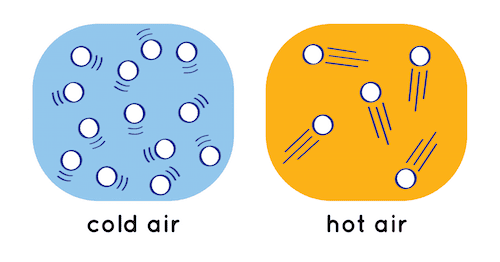What exactly is wind? And how does it form, strengthen, and move across the country?
 |
| Difference between colder and warmer graphics. Image: SciJinks.gov |
 |
| The sun heats up the air and leaves lower pressure behind. Image: Scijinks.gov |
This is all for the general wind in the atmosphere. But what brings that from the atmosphere to the surface?
Stronger winds at the surface are a result of atmospheric mixing. This is a process in which stronger winds get brought down to the surface from several thousand feet above. It is caused by strong wind shear, which means there are sharp differences in wind speeds as you move vertically.
Those differences, and the resultant shear, are caused by the temperature differences discussed before (uneven heating by the sun). Stronger winds move downwards as a result of the shear. The amount of shear is a key factor in how windy it will be that day. If there is a sharp change in wind directions or speeds as a storm departs, winds will get stronger.
The bigger the temperature differences in the atmosphere as compared to the ground-level weather, the stronger the winds will be at the surface, since the ground will be at a lower pressure than the atmosphere. That will cause gasses to be transported down to ground-level.
Comments
Post a Comment
If you have questions or comments, feel free to leave your thoughts in the comments section provided. We only allow on-topic, constructive comments. Spamming, advertising for your business - even if concealed in an otherwise okay post - is not allowed.